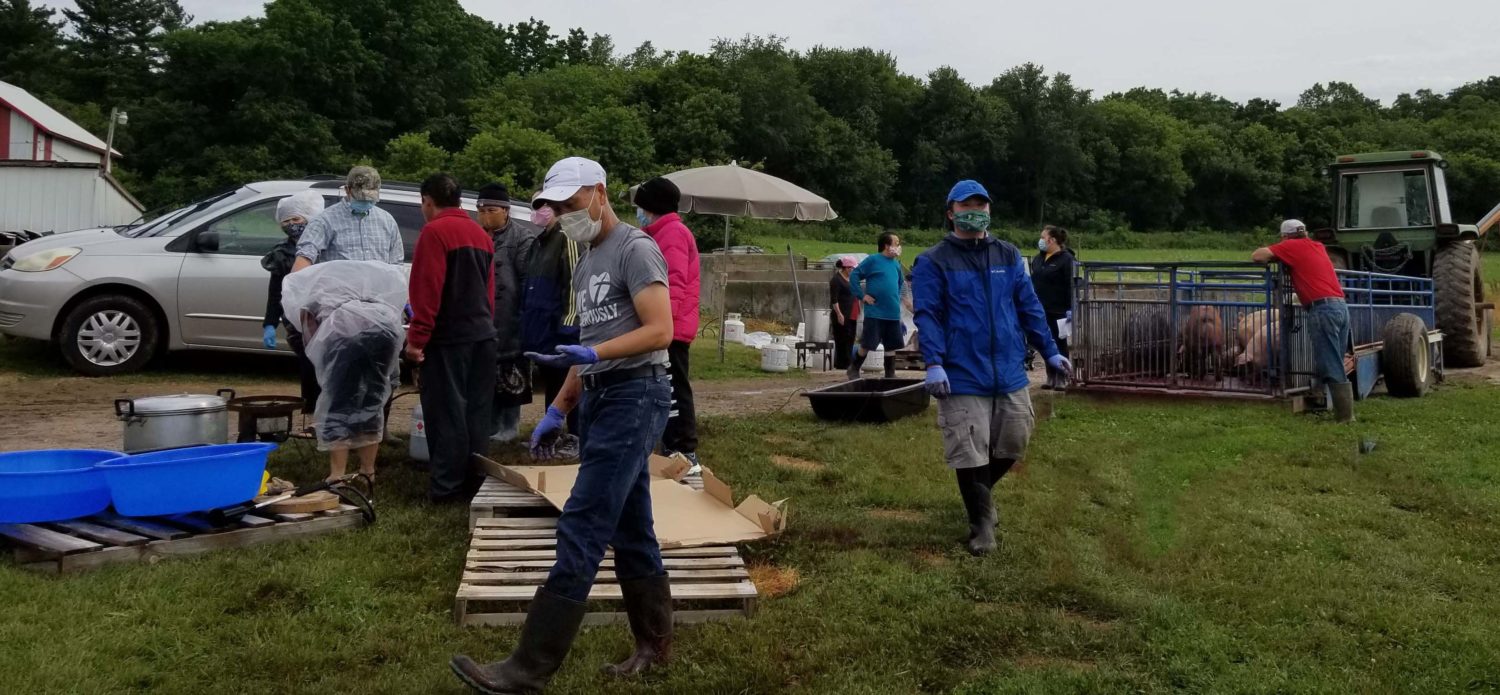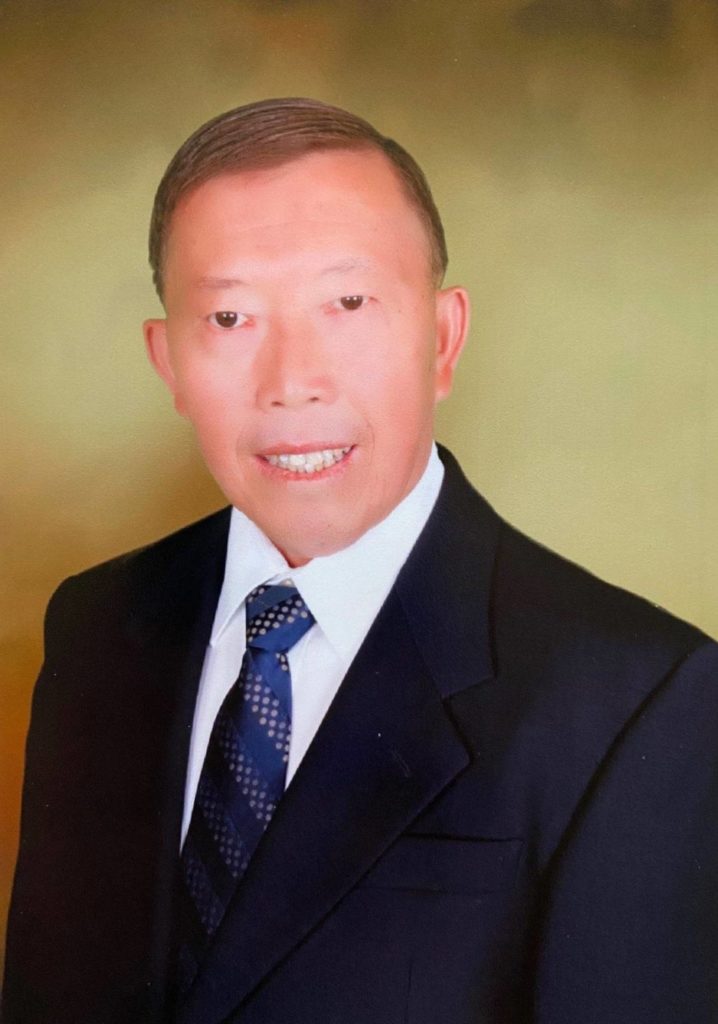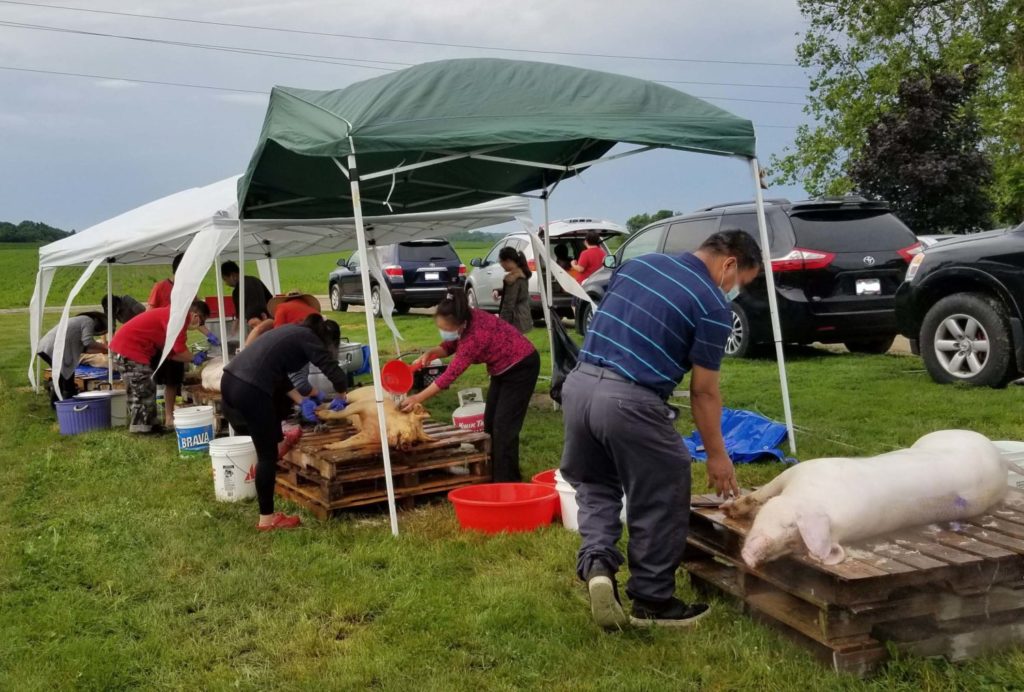
As Hmong, Lao, Cambodian, Tibetan, and Nepalese refugees came to the United States, many of them had to abandon their long-standing agrarian traditions such as growing rice and raising livestock for food. However, on a recent sunny Friday in July, Hmong elders of The Hmong Institute’s Hmoob Kaj Siab program were able to practice the tradition of butchering a pig for food. Working with a local pig farmer from Edgerton, Wis., 67 Southeast Asian households were able to get meat from a 175-pound pig.
“Butchering a pig through the Hmong Kaj Siab program, I now have enough meat to last me for several months,” Wa Pao Thao, a Hmong elder, tells Madison365 through a translator. “During the pandemic, it is especially challenging and scary to go out to the stores to purchase groceries. The price of meat had gone up too and with my limited income, I struggle with getting enough food especially meat.”
Thao says that he remembers when his family first arrived in the United States in 1996 to a tiny town of Berlin, Wis., before moving to Madison in 2002, when he had very little money to buy food.

“So I would butcher a pig every month. If I butcher my own pig, I save money because I get more meat,” Thao says. “This would be the meat we use for every meal. I had 12 children, four sons and eight daughters. Two sons and two daughters died.
“I am very grateful for the opportunity to get fresh meat with help from Hmoob Kaj Siab. Butchering this pig means more to me than just having enough meat. It provides me with the opportunity to use my butchering skills and also enjoy the process with my peers,” Thao adds. “At my age and being in the US, I don’t get to experience this anymore. It was such a wonderful time to be with peers and doing what I had done for many years prior to coming to the US in 1996.”
On this particular Friday, elders brought their propane tanks to boil water, knives to cut the meat, and their knowledge of butchering and using all the parts of the pig for food so very little is wasted.
“The Hmong traditionally are animists. We believe that objects, places, and creatures all possess a distinct spiritual essence or a spirit. Therefore, we respect all things both on earth and in heaven and must give thanks to them,” Thao says. “We butcher a pig to thank the earth and heaven for providing for us. We thank our ancestors for watching over us.
“Before we celebrate the new year, during the last week of December, each family would butcher a pig for noj tsiab (nee-all jia), the family feast before New Year’s Day to thank the past year for what it has provided the family and to welcome in the new year,” Thao continues. “On New Year’s Eve, we butcher a pig to prepare a meal for the whole village to eat together. The food is not just for the villagers, but it is also offered to the spirit of our ancestors and healthy spirits to eat with us to welcome in the New Year.”

Peng Her, CEO of The Hmong Institute, tells Madison365 that they arranged the outing to find a way to support local farmers who are struggling to get their livestock to market as slaughterhouses are closed due to COVID-19.
“At the same time, we also wanted to support our Southeast Asian elders who are having difficulty buying meat as prices have increased,” Her says. “This is a win-win-win situation because we are able to support local farmers sell their pigs, elders are able to get fresh meat, and elders are able to pass down the tradition of butchering a pig for food to their children or grandchildren.”
Selection of the animal is important and female pigs are most desired as many believe the meat tastes better, Her says. The pig should be healthy without any visible defects.
“Back in Laos, we used to raise our own pigs. Selecting a healthy one is important. Pigs, like any other food, needs to be raised properly. A pig that is healthy will provide the body with the best meat to nourish the body. A sick, weak or unhealthy pig will not provide the best meat for the body,” Thao says. “When I select a pig, I observe to see how it walks and see if it is strong and healthy by its size and skin. I like to pick female pigs because they taste better.”

For many of the Hmong elders, this was the first time they were able to butcher a pig like they did back in their homeland. The size of the animal and the skills involved to humanely put them down and butchering them require experience and many people. This particular outing was a generational affair.
“Each family member has a role in the butchering process. Elders teach by allowing the children or grandchildren to participate in all aspects of the process so they, too, will know how to butcher a pig and keep the tradition going,” Her says. “In the Hmong culture, a good son-in-law should know how to butcher a pig and a good-daughter-in-law should know how to use all the parts of the pig so little goes to waste.”
Thao says that as he passes this tradition on to the next generation he wants to make sure that they know the history of it and hopes the children and grandchildren now have a deeper appreciation of where their food comes from.
“I feel the younger generations cannot tell the difference between fresh meat and meat that had been processed by adding colors and/or preservatives to keep it looking nice,” Thao says. “I still don’t like meat bought from the stores but that is what is available.
“My wife passed away in 2008 and I have not had the opportunity to butcher pigs like in the past,” Thao adds. “Butchering a pig through the Hmong Kaj Siab program, I now have enough meat to last me for several months.”



